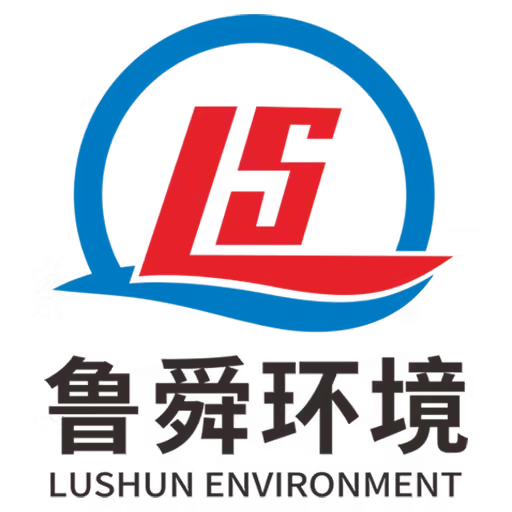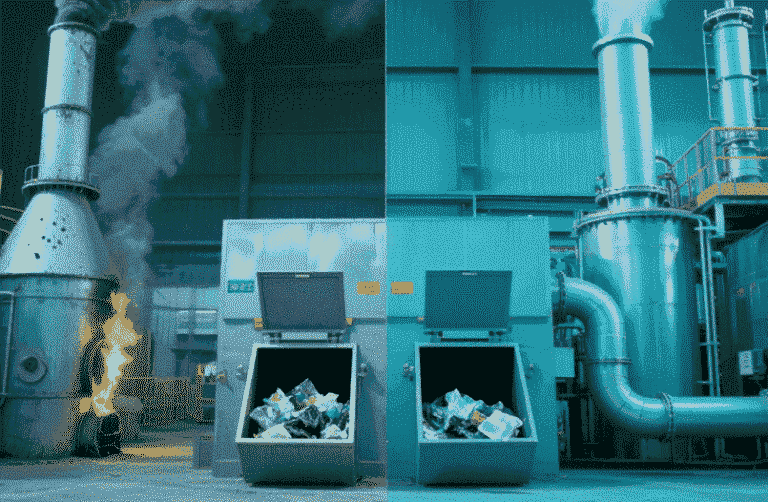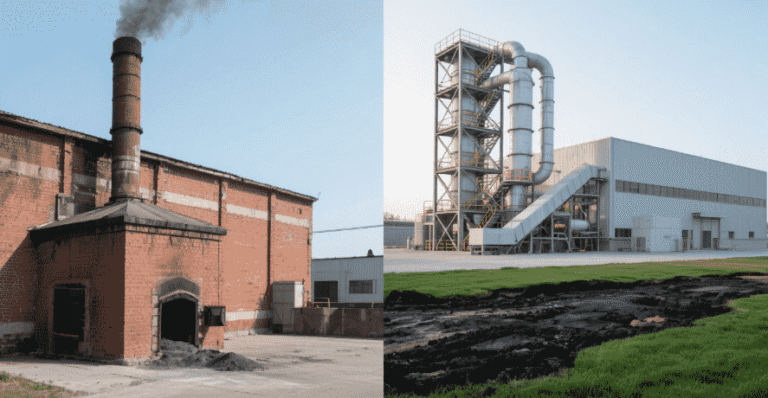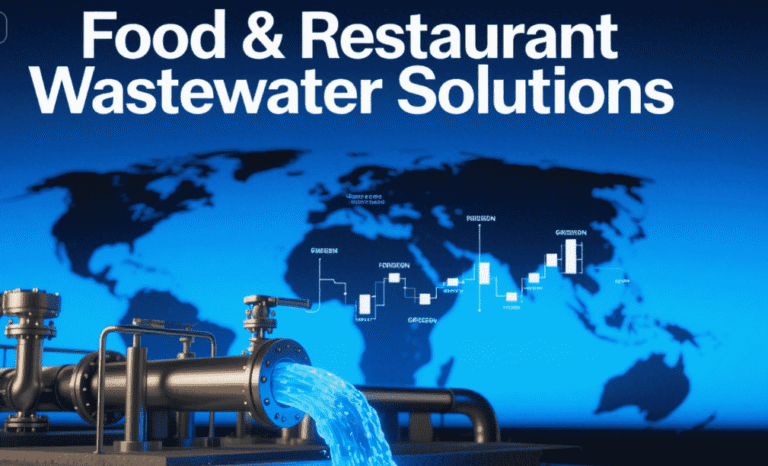Welcome to My Blog! 🌟
I’m so glad you’re here! Before we jump into the exciting content, I’d love for you to connect with me on my social media platforms. It’s where I share extra insights, interact with our amazing community, and post regular updates. Here’s how you can join the conversation:
📘 Facebook: Follow me on Facebook for more updates
Now, let’s dive into the journey ahead. I hope you find everything here both engaging and valuable. Together, let’s explore, learn, and grow! 🚀
Table of Contents
Introduction

Sludge dewatering is a vital process in wastewater treatment, industrial waste handling, and environmental management. Despite its importance, there are numerous misconceptions about how sludge dewatering works, what it can achieve, and how to approach it efficiently. These misunderstandings not only hinder operational efficiency but also lead to unnecessary costs and environmental risks.
In this blog post, we will uncover and clarify seven shocking myths about sludge dewatering. These myths are widespread in many industries and among professionals who deal with sludge on a daily basis. Understanding the truth behind these myths can help organizations make better decisions, choose the right technologies, and ensure environmental compliance.
Let’s dive into these myths and set the record straight.
Myth 1: Sludge Dewatering Is Only About Reducing Water Content
While it’s true that the primary function of sludge dewatering is to separate water from solids, it is not solely about moisture reduction. This myth oversimplifies the broader impact of sludge dewatering.
Effective sludge dewatering impacts:
- Transportation costs
- Disposal fees
- Overall environmental footprint
- Efficiency of downstream processes
Advanced sludge dewatering technologies do much more than just reduce water. They help stabilize the waste, reduce odor, improve handling, and even make the byproduct reusable in certain industries.
Myth 2: All Sludge Types Can Be Dewatered the Same Way
Many assume that all types of sludge can be processed using the same dewatering method. In reality, sludge varies greatly in terms of composition, source, and consistency.
Examples of sludge types:
- Biological sludge (from municipal wastewater)
- Chemical sludge (from industrial plants)
- Mixed sludge
Each type requires a specific approach, and using a one-size-fits-all method can lead to equipment damage, poor dewatering performance, and increased costs.
Myth 3: Sludge Dewatering Equipment Is Too Expensive for Small Facilities
Small facilities often avoid implementing sludge dewatering systems, believing the equipment is prohibitively expensive. However, this is not always the case.
Many manufacturers offer scalable, modular, or portable sludge dewatering solutions that suit smaller operations. Over time, these systems pay for themselves through cost savings in transportation, disposal, and labor.
Moreover, governmental and environmental agencies often provide subsidies or incentives for installing energy-efficient waste treatment systems, including sludge dewatering units.
Myth 4: Chemical Additives Are Always Necessary

Another common myth is that dewatering cannot be effective without chemical additives. While conditioning agents like polymers are widely used to enhance sludge dewatering, they are not always mandatory.
In some cases, physical methods such as centrifugation or screw pressing can achieve acceptable results without chemical aid. The decision to use additives depends on the sludge characteristics and the desired level of dryness.
It’s essential to conduct pilot tests to determine the optimal dewatering strategy before investing in chemicals.
Myth 5: Sludge Dewatering Has No Environmental Benefit
Some believe sludge dewatering is only a logistical convenience and does not contribute to environmental protection. This could not be further from the truth.
By reducing the volume of sludge:
- Fewer trucks are needed for transport, cutting fuel use
- Landfill space is preserved
- Potential leachate and runoff are minimized
In many cases, the dewatered sludge can also be used in land applications, composting, or even as an energy source, thereby contributing to circular economy practices.
Myth 6: Maintenance of Dewatering Equipment Is Overly Complex
This myth discourages many operators from investing in dewatering solutions. In reality, modern sludge dewatering systems are designed for user-friendly operation and minimal maintenance.
Features of modern equipment:
- Automated controls
- Self-cleaning functions
- Remote monitoring
Proper training and routine checks can keep these systems running efficiently with little downtime.
Myth 7: More Expensive Equipment Guarantees Better Results

Higher cost does not always mean higher efficiency. Performance depends more on matching the right technology to the specific sludge type and treatment goals.
An expensive system that isn’t suited to your sludge composition can underperform compared to a well-selected mid-range option. Consulting with experienced engineers and conducting sludge analysis are key steps to making the right investment.
Comparison Table of Dewatering Methods
| Method | Suitable Sludge Types | Chemical Requirement | Dryness Level Achieved | Capital Cost | Maintenance Needs |
|---|---|---|---|---|---|
| Belt Filter Press | Biological, Mixed | Moderate | Medium | Medium | Low |
| Centrifuge | Chemical, Biological | Optional | High | High | Medium |
| Screw Press | Fibrous, Biological | Low | Medium | Medium | Low |
| Drying Beds | Biological (small scale) | None | Low | Low | High (manual) |
| Plate & Frame Press | All types | High | Very High | High | High |
Conclusion
Sludge dewatering is a complex but essential component of waste management. The myths surrounding it can prevent organizations from optimizing their systems, saving money, and contributing positively to the environment.
By debunking these seven myths, we’ve highlighted the flexibility, efficiency, and strategic value that sludge dewatering brings when implemented correctly. The next time you evaluate your waste treatment system, consider a fresh perspective based on facts, not assumptions.
Choosing the right sludge dewatering method and equipment can unlock both economic and ecological benefits. Don’t let outdated myths shape your strategy—rely on data, testing, and expert guidance.
FAQ
What is sludge dewatering?
Sludge dewatering is the process of reducing the water content of sludge to minimize volume and weight, making it easier and cheaper to handle, transport, and dispose of.
Is sludge dewatering mandatory?
In many regions, environmental regulations require sludge dewatering before disposal or reuse to reduce environmental impact and comply with legal limits.
How do I choose the right dewatering method?
Selection depends on sludge type, project scale, budget, and regulatory requirements. Consulting with experts and testing are crucial steps.
Can dewatered sludge be reused?
Yes, depending on its content, dewatered sludge can be reused in agriculture, construction, or energy production, contributing to sustainability.
Are there maintenance concerns with dewatering systems?
Modern systems are designed for ease of maintenance. Regular inspections and proper operation can minimize downtime and extend equipment life.






